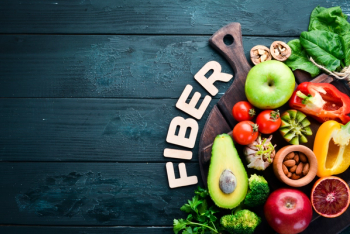
- Nutritional Outlook Vol. 27 No. 9
- Volume 27
- Issue 9
Pushing protein limits
Dairy protein manufacturers strive to innovate as protein content claims continue to rise with consumer demand.
Consumers respond to protein in products and therefore demand for protein-fortified products continues to grow. According to the 2024 Food and Health Survey from the International Food & Health Survey, 71% of respondents in 2024 expressed a desire to consume more protein, making it the number one nutrient on the minds of consumers, ahead of fiber, vitamin D, and calcium, for example.
“Protein content is consistently being pushed higher, replacing more and more formulas that were once dominated by carbohydrates,” says Tucker Smith, research manager for Glanbia Nutritionals (Chicago, IL). “Products that have historically been virtually all carbohydrate, like breakfast cereals, are now being heavily fortified with protein, creating healthy options in spaces that were almost completely composed of simple and complex carbohydrates.”
“Not only has protein retained a positive perception among consumers, but there also continues to be interest in higher levels of protein in many products,” adds Niki Kennedy, director, Insights & Content, Glanbia Nutritionals. “Advancements in ingredient technology have made the challenge more solvable to product formulators including increasing protein content in a variety of applications.”
One example Kennedy provides is the recent launch of David bars which contain 28 grams of protein per bar. “Our bars feature a thoughtfully selected blend of milk protein isolate, collagen, whey protein concentrate, and egg white designed to optimize both taste and nutrition,” explains David co-founder Peter Rahal. “This mix achieves a perfect PDCAAS (Protein Digestibility-Corrected Amino Acid Score) of 1.0 to optimally support both muscle-building and bodily functions (including skin, hair, and nail health).”
David bars are a good example of how manufacturing with protein ingredients has seen substantial progress. Dairy proteins in particular have long been a popular choice for formulators and consumers because of their amino acid profile and organoleptic properties. However, with the growing demand for higher protein content, even dairy proteins are being pushed to their limits. Here’s how formulators are working with these ingredients to delivery high protein content and quality, as well as a good consumer experience.
Types of Dairy Protein
It should be no surprise the whey protein dominates the dairy protein category. Smith explains that this is for good reason, because of its “high leucine content, rapid digestion, high quality, and its effectiveness in stimulating muscle protein synthesis make it a fantastic choice, not only for sports nutrition enthusiasts, but for the everyday consumer.”
That said, dairy proteins like casein and milk proteins also have a lot to offer. “In some cases, often due to heat stability, solubility or water affinity, casein proteins are more appropriate to use,” explains Smith. “Milk proteins are much more commonly used in shelf stable beverages, for example, although whey-based products with high heat stability, even UHT stable whey proteins, are offered by Glanbia Nutritionals.”
Kennedy concurs, adding that “Casein is often identified as the overnight dairy protein with a slower release.”
However, in a world of boundary pushing protein content across a range of formats, blending different dairy proteins is often the key to delivering a high-quality product.
“Each protein source and fraction will have its own unique functionality in every application due to its unique chemistry and amino acid profile,” says Smith. “Some proteins bind water, while others do not. Some emulsify fats well in a given system while others do not. Some encourage foaming, while others break foams down. It’s very important to utilize the correct dairy protein to achieve the desired result.”
For example, whey protein concentrates and isolates have good solubility across a range of pH levels (2 to 9), but have low water-binding capabilities which make them well-suited for sports beverages and meal replacements.1 Low water binding is useful when you’re trying to maintain a certain look, flavor, and texture. This is because high water-binding means higher viscosity, so whey is soluble but does not have high viscosity. However, it is also less stable at higher heats, which impacts its solubility. This is contrast to casein, which have high water binding and emulsification properties, as well as stability.
Understanding how to leverage these different protein sources and their properties is the key to developing high protein products that maintain palatability and functionality. Ingredient suppliers are helping to push the boundaries of protein content through persistent innovation and collaboration, notes Smith.
“There are a variety of processes and techniques used to create uniquely functional dairy protein ingredients, which have empowered companies to continue increasing protein content while maintaining pleasant flavor and texture,” says Smith. “It is also important to note that protein innovation has not happened in a vacuum. When it comes to palatability of many fortified foods, the flavors used are also of importance. Application work on high protein foods is done hand in hand between protein ingredient developers, application scientists and flavorists who all specialize in high protein applications. Working together from the ingredient processing to the application formula to the masking and flavor system is essential to produce the highest quality product.”
Trends
Beyond a trend for rising protein content across product formats, there is an increasingly diverse range of products that are now carrying protein claims. “Another important trend in protein is in the indulgent snacking space,” says Smith. “Again, often replacing snacks primarily composed of carbohydrate and sugar, quick snacks that are simple, easy to take on the go, delicious, and healthy are on the rise. More and more we are seeing requests for dairy protein fortification in these sorts of foods.”
The reason people consume protein is also changing, says Kennedy. “The awareness of protein’s impact on satiety based on its nutrient density is certainly driving the growth of protein-fortified products in the market,” she explains. “In only the past 5 years, we’ve seen a large increase in the variety of protein-fortified products moving from the traditional beverages and protein bars to protein-fortified snacks and bakery products. This trend is accentuated by the increased interest in nutrient density in those currently using or that have used GLP-1 weight loss medications or other weight loss treatments. We have witnessed that high protein bars (those with 15 g of protein or higher) have seen significantly better retail growth performance compared to their lower protein counterparts in the last year.”
This is exemplified by the aforementioned David bars which tout high protein and low calorie content to support weight management. “As most know, protein is the essential building block of muscle. Many don’t realize that protein is also a massive lever for fat loss. It promotes satiety, making people feel fuller for longer. This leads to eating fewer calories and losing fat, all while maintaining muscle better than in a low-protein diet,” explains David’s co-founder Rahal.
Smith also points to sustainability as an important trend among protein manufacturers. He cites Glanbia’s St. John, MI-based cheese plant as an example. According to Smith, the plant was engineered to have a reduced carbon footprint, water usage, and waste.
“The plant generates 800,000 gallons of clean water each day from the milk processed in the plant,” Smith explains. “In fact, the plant is a net generator of water, since it discharges more water than it actually pulls from the city. It is able to reuse 90% of the water at the site. Wastewater treatment on site includes anaerobic digestion to generate biomethane, creating renewable energy from waste to help fuel plant operations.”
Sustainable practices are particularly important as more consumers consider the climate impact of their food choices. Concerns about animal agriculture and its impact on the environment, for example, have motivated people to either completely remove animal products from their diet or at least significantly cut down on their consumption of animal-based products. This has led to a growing interest and adoption of plant-based protein sources as a way to get supplemental protein. That said, consumers that have cut down on animal products but have not entirely removed them from their diet, dubbed flexitarians, may still be open to dairy proteins if the product is of a high quality and sustainably made.
Reference
- Rexroat, T. Choose the best whey protein. Dairy Foods. March 7, 2018. https://www.dairyfoods.com/articles/92781-choose-the-best-whey-protein (accessed 2024-10-25).
Articles in this issue
about 1 year ago
Fiber forwardabout 1 year ago
Lively Liposomesabout 1 year ago
Big picture on stress managementabout 1 year ago
Advancements in infant nutritionabout 1 year ago
Power of nutrition in cardiac healthNewsletter
From ingredient science to consumer trends, get the intel you need to stay competitive in the nutrition space—subscribe now to Nutritional Outlook.





